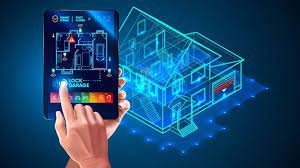Edge computing and fog computing are two concepts related to the decentralized processing and analysis of data in IoT (Internet of Things) environments. Here’s an overview of each concept:
- Edge Computing:
Edge computing refers to the practice of processing and analyzing data closer to the source or edge of the network, typically on the IoT devices themselves or on nearby edge servers. The goal is to reduce latency, conserve network bandwidth, enhance privacy and security, and enable real-time or near-real-time decision-making at the edge.Key characteristics of edge computing include:- Localized Processing: Data processing and analytics occur near the data source, reducing the need for data transmission to centralized cloud servers.Low Latency: By minimizing the distance between data generation and processing, edge computing reduces the time required for data to travel across the network.Bandwidth Optimization: Edge devices can filter, preprocess, and aggregate data before transmitting it to the cloud, reducing the amount of data sent over the network.Offline Operation: Edge devices can continue to function and process data even when connectivity to the cloud is disrupted.
- Fog Computing:
Fog computing extends the concept of edge computing by introducing a hierarchical architecture that includes intermediate computing nodes called fog nodes or fog servers. These fog nodes are positioned between the IoT devices at the edge and the centralized cloud servers.Key characteristics of fog computing include:- Distributed Computing: Fog nodes perform processing, storage, and analytics closer to the edge, complementing the capabilities of the cloud.Scalability: The fog layer provides additional computing resources to handle the increasing volume of IoT data and applications, relieving the burden on centralized cloud servers.Heterogeneity: Fog computing supports a diverse range of devices, including resource-constrained IoT devices, gateways, and more powerful edge servers.Dynamic Adaptability: Fog nodes can dynamically adjust their computing resources based on workload demands and network conditions.
Both edge computing and fog computing provide solutions for managing the growing demands of IoT applications by distributing computing resources closer to the data source. They enhance the efficiency, responsiveness, and scalability of IoT systems while addressing the challenges posed by latency, bandwidth, and data privacy.
KEY CHARACTERISTICS AND BENEFITS OF EDGE COMPUTING INCLUDE:
- Reduced latency: By processing data locally, edge computing minimizes the delay in data transmission to a remote cloud server and back.
- Enhanced real-time processing: Edge computing enables instant data analysis and decision-making at the edge, leading to faster response times and lower latency-sensitive applications’ requirements.
- Bandwidth optimization: By processing data locally, edge computing reduces the amount of data that needs to be transmitted over the network, optimizing bandwidth usage.
- Improved data privacy and security: Edge computing allows sensitive data to be processed and stored locally, reducing potential privacy and security risks associated with transmitting data to a remote cloud server.
Fog Computing: Fog computing, also known as edge fog computing, extends the edge computing concept by adding an intermediate layer of computing and storage resources between edge devices and the cloud. Fog computing essentially brings cloud-like capabilities closer to the edge devices, typically on a local network or within the proximity of the devices. This intermediate layer or fog nodes can be gateways, routers, or servers that provide computational resources and act as an extension of the cloud.
Key characteristics and benefits of fog computing include:
- Distributed computing: Fog computing enables distributed processing and analysis of data across multiple fog nodes, reducing the burden on individual edge devices.
- Scalability and flexibility: Fog nodes can scale depending on the requirements, allowing for efficient resource allocation and dynamic workload distribution.
- Localized analytics: Fog computing enables data processing and analysis closer to the edge, reducing the need for data transmission to a remote cloud server and enabling real-time decision-making.
- Improved network efficiency: By offloading computation to fog nodes, fog computing reduces network congestion and optimizes bandwidth usage.
- Support for heterogeneous devices: Fog computing provides a unified platform for different types of edge devices with varying processing capabilities and ensures interoperability between them.
